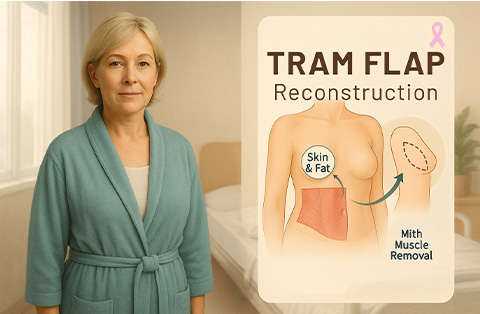Deciding to undergo a breast reduction is both a personal and medical choice. It’s essential to understand the procedure, its implications, and the recovery journey. This guide will provide insights into the commonly asked question, “How long after breast reduction will I know my size?” and delve deep into the breast reduction journey.
Understanding Breast Reduction Surgery
Breast reduction, scientifically known as reduction mammaplasty, is a surgical procedure aimed at achieving a more proportionate breast size and shape by removing excess tissue, fat, and skin. The surgery can alleviate the discomfort that often accompanies oversized breasts, providing both physical relief and an improved aesthetic appearance.
The Surgical Process: Step by Step
Consultation & Planning:
Prior to the surgery, you’ll have a detailed consultation with your surgeon. This will involve discussions about your desired size and any concerns. Imaging or breast measurements may be taken to plan the procedure.
Anesthesia:
On the day of the surgery, general anesthesia is typically administered, ensuring you remain asleep and pain-free throughout the procedure.
Incisions:
Depending on the reduction method and the individual’s anatomy, the surgeon will make one of several types of incisions:
- Circular: Around the areola.
- Keyhole: Around the areola and vertically down to the breast crease.
- Anchor: Combines the keyhole with an additional horizontal incision along the breast crease.
Tissue Removal:
Excess breast tissue, fat, and skin are removed. The amount and method depend on the desired outcome and individual circumstances. In some cases, liposuction may be used in conjunction with excision techniques.
Reshaping and Suturing:
Once the desired amount of tissue has been removed, the surgeon will reshape the remaining breast tissue. The nipple and areola might also be repositioned to align with the new breast shape. The incisions are then closed with sutures.
Recovery:
After the surgery, you’ll be moved to a recovery room, where you’ll be monitored as you come out of anesthesia. Typically, patients can go home on the same day, but occasionally, an overnight stay might be required. You’ll be fitted with a special surgical bra or bandages for support.
This surgery can be life-changing for many, offering relief from physical discomfort, improving posture, and enhancing overall self-confidence. However, as with any surgery, it’s essential to understand the process thoroughly, set realistic expectations, and ensure you’re in the hands of a trusted medical professional.
Recovery Timeline
- First Week: Swelling, bruising, and mild pain. A surgical bra is typically worn.
- 1-2 Months: Majority of swelling subsides, and the incisions start to fade.
- 3-6 Months: Breasts settle into their shape, but minor swelling may persist.
- 1 Year: Incisions mature, and breasts should be fully settled into their new size.
- 2 Years After Breast Reduction: Considered the healed breast reduction surgery stage. Most of the surgical after-effects have resolved.
Tips for Ensuring a Smooth Recovery Process
- Wear the provided surgical bras and avoid underwired bras.
- Avoid strenuous activities and heavy lifting.
- Follow post-surgery medication and care instructions.
- Attend regular follow-up visits.
- Ensure proper wound care to minimize scarring.
What Cup Size Will I Have After a Breast Reduction?
The final cup size post-surgery isn’t guaranteed, as factors like individual anatomy, desired breast proportion, and surgical considerations play a role.
However, the aim is always to provide a size that is both functional and aesthetically pleasing.
How Does a Surgeon Decide What Size You Should Be?
When considering breast reduction, one of the primary concerns of many patients is the final size of their breasts post-surgery. The decision on size isn’t arbitrary but is a collaborative process involving both the surgeon and the patient.
Here’s a deep dive into how surgeons arrive at this decision:
- Patient’s Preferences: First and foremost, the surgeon will discuss with the patient about their desired breast size. Some patients might wish for a dramatic reduction, while others may prefer a moderate change. Understanding the patient’s objectives sets the stage for further considerations.
- Body Proportions: The surgeon will evaluate the patient’s overall body frame, height, and weight. The aim is to achieve a breast size that’s harmonious with the rest of the body. It should not only enhance aesthetics but also offer comfort.
- Health Considerations: If the primary reason for the breast reduction is to alleviate physical discomfort, such as back or neck pain, a more significant reduction may be recommended. This is to ensure that the primary health issues are addressed.
- Skin Elasticity: The quality and elasticity of the breast skin play a role in determining the final size. Firmer skin can support a broader range of sizes, while less elastic skin might have some limitations, especially if the patient wants to avoid sagging.
- Nipple Position and Size: The position and size of the areola and nipple can impact the final breast size. In cases where these are large or drooping, the surgeon might suggest a size that allows for their repositioning without appearing out of proportion.
- Safety and Viability: Very aggressive reductions might compromise blood flow to the nipple and surrounding tissues. The surgeon will always prioritize procedures that maintain the health of the tissue and ensure a safe recovery.
- Future Considerations: Some patients may be planning for future events like pregnancy, which can change breast size. Discussing these plans with the surgeon can influence the decision on the final size.
- Aesthetics and Symmetry: Beyond size, the overall shape and symmetry of the breasts are also considered. Surgeons aim for a natural look, which might sometimes mean adjusting the size slightly to achieve better symmetry.
- Patient’s Lifestyle: A very active individual might lean towards a smaller, more manageable breast size. The surgeon will consider aspects like the patient’s professional demands, sports involvement, and other lifestyle factors.
- Post-Surgery Adjustments: Surgeons often remind patients that post-surgery, there could be changes like swelling that temporarily alter the breast size. An experienced surgeon will factor in these potential changes when deciding on the reduction amount.
The decision on the post-surgical breast size is a blend of art and science. It requires the surgeon’s expertise, understanding of the patient’s needs, and a comprehensive evaluation of the individual’s unique anatomy and health considerations.
As always, open communication between the patient and the surgeon is key to achieving the best outcome.
Do Breasts Grow Back After Breast Reduction?
Factors like weight gain, hormonal changes, or pregnancy can lead to an increase in breast size even after surgery.
How Long After Breast Reduction Will I Know My Size?
Post-surgery, swelling impacts the actual size. Generally, by 6 months to a year, most women have a clear idea of their final breast size.
Does Breast Reduction Make You Look Thinner?
While the primary aim is to reduce breast size, the procedure often leads to a more proportionate figure, potentially creating a slimmer appearance.
Is Breast Reduction Worth It?
Many patients report increased comfort, reduced back pain, and enhanced self-confidence post-surgery.
Will I Lose Weight After a Breast Reduction?
While some weight loss is natural due to the removal of breast tissue, it’s not a weight loss procedure.
What kind of procedures can be done in conjuncture with Breast reduction?
- Breast Lift: To uplift sagging breasts.
- Liposuction: For contouring and fat removal.
- Tummy Tuck: To flatten the abdomen.
Should I Lose Weight Before Reduction Mammaplasty?
It’s recommended to be at a stable weight before the surgery to achieve consistent results.
Can I Choose My Breast Size Before Breast Reduction?
While preferences are considered, surgical safety and post-surgery health are paramount.
Conclusion
Breast reduction is a transformative journey. Remember, patience and adherence to post-surgery care are crucial to achieving the best results. Interested in more insights or considering a breast reduction? 🌟 Reach out to our experts at Care In Turkey 🌟 for personalized advice and care.






